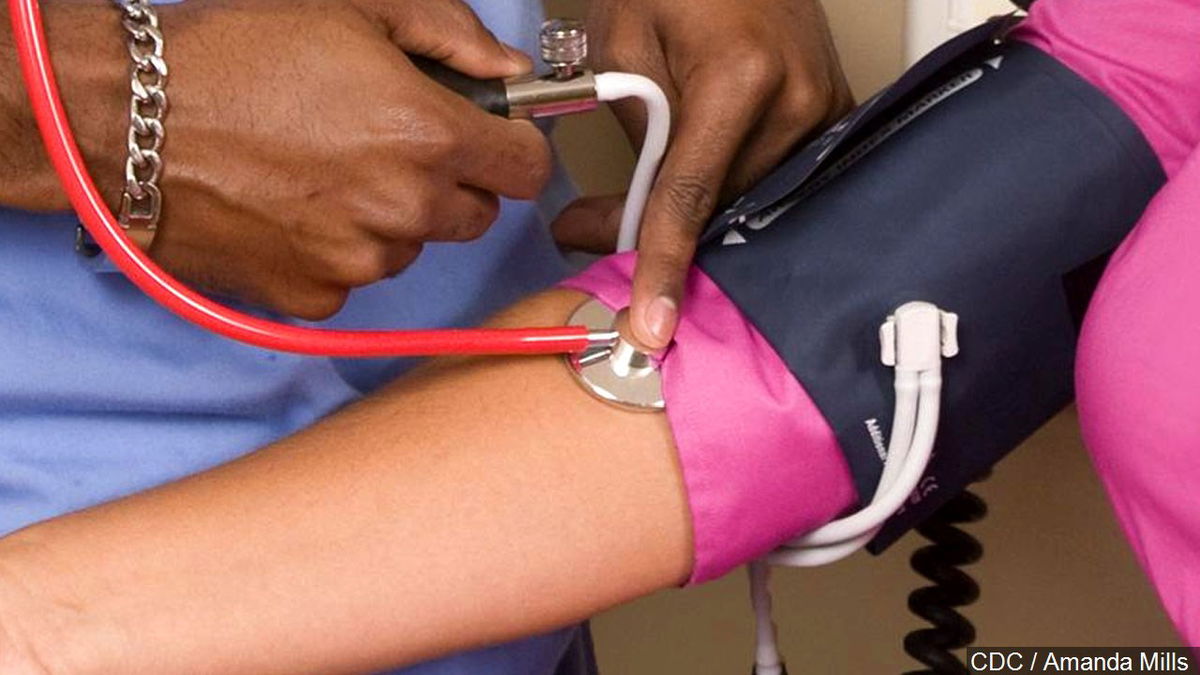Why women should monitor blood pressure differently, according to a new study

When you visit the doctor, often the first order of business is wrapping a blood pressure cuff around your arm and looking to the display screen for the magic number. What’s that number, you ask? Less than 120 over 80, or 120/80, measured in millimeters per mercury, is what has long been understood as within the healthy range — until now.
If you’re a woman, doctors may have been using the wrong metric for your blood pressure all along, according to a new study published February 15 in the journal Circulation.
The research looks at the first number, the systolic blood pressure, which indicates how much pressure your blood is creating against your artery walls when the heart beats.
While less than 120 millimeters per mercury may be within the normal range for men, the target systolic blood pressure for women should be less than 110 millimeters per mercury, the study found.
Heart disease is the top killer of Americans, a fact worth noting during American Heart Month. These results change the way we should look at what is considered normal blood pressure for women, said senior author Dr. Susan Cheng, director of the Institute for Research on Healthy Aging at Cedars-Sinai’s Smidt Heart Institute in Los Angeles.
“We’ve been thinking about what normal blood pressure is in people under the assumption that men and women are the same, when really they’re a lot more different than we realized,” said Cheng, who also serves as associate professor of cardiology at Cedars-Sinai.
The study examined blood pressure measurements of just over 27,000 participants. The findings revealed that for women levels above 110 millimeters per mercury were associated with risk for developing any type of cardiovascular disease — including heart attack, heart failure and stroke — a difference from the report’s results for men.
The implications are far-reaching. Blood pressure is, as Cheng put it, “the single most major modifiable risk factor for all different types of cardiovascular disease.”
While high blood pressure can bring a lot of health risks, it’s also something people can control through diet and exercise, especially when they are younger.
Other factors, like age, sex and genetics, aren’t “modifiable,” Cheng said. And considering the other modifiable factors such as high cholesterol and smoking, blood pressure is one “we really still should be doing a much better job of preventively controlling,” she added.
Recommendations for women
Blood pressure guidelines that doctors use daily provided by organizations like the Centers for Disease Control and Prevention and the American Heart Association say that less than 120/80 millimeters per mercury is a healthy range for all adults.
But Cheng said it’s not necessarily a good thing that the health care field doesn’t personalize this number based on a patient’s sex.
Combining the importance of blood pressure with the possibility that many women could be over their true healthy range without them or even their doctors being fully aware of it, Cheng urges both doctors and patients to reexamine this area of health.
“Women need to really take their blood pressure seriously,” she said. “Even when it looks like it’s in the normal range for everybody — or really for men — even when it is under 120, if it’s above 110 it’s something to keep an eye on.”
She recommends women monitor themselves when they are relaxed at home, by using a blood pressure cuff approved through FDA trials, like the one Omron makes.
After several at-home tests, it’ll be easier for them to find their true average, according to Cheng. She also recommends taking steps to lower blood pressure, like altering diet or lifestyle.
A step toward more personalized medicine
These results are a good beginning for what needs to be a deeper dive into other sex-based differences, said Dr. Eugene Yang, professor of medicine at the University of Washington, who was not involved in the study.
“Due to the observational nature of this and the other highlighted studies, we should adhere to published guidelines for blood pressure targets for women and men,” said Yang, who is also incoming chair of the American College of Cardiology Prevention of Cardiovascular Disease Section.
“We need to remain open to the idea that this may not be optimal based on sex. As more studies are published, I anticipate that sex-specific differences in high blood pressure definitions and management may emerge.”
Cheng said her team’s research on blood pressure and sex differences is only the tip of the iceberg of a much bigger goal in the health field: personalized medicine.
“When we want to (reach) the holy grail of personalized medicine, we really should start with the first branching point of what makes us different — and that is sex,” she said.
There needs to be a broader look at medicine aside from the “one size fits all” approach for most risk factor management, Yang said. And this isn’t limited to only differences based on sex.
“Furthermore, we need to be mindful of racial differences and enrich studies with enough diversity to assess outcomes based on race,” he said.
Yang warned that high blood pressure is a “silent killer” and without getting tested, someone may not be aware their levels are elevated.
“Since this is heart awareness month, it is a good time for everyone to ‘know their number’ and make sure that they consult with their doctor and check their blood pressure on a regular basis,” Yang said.






